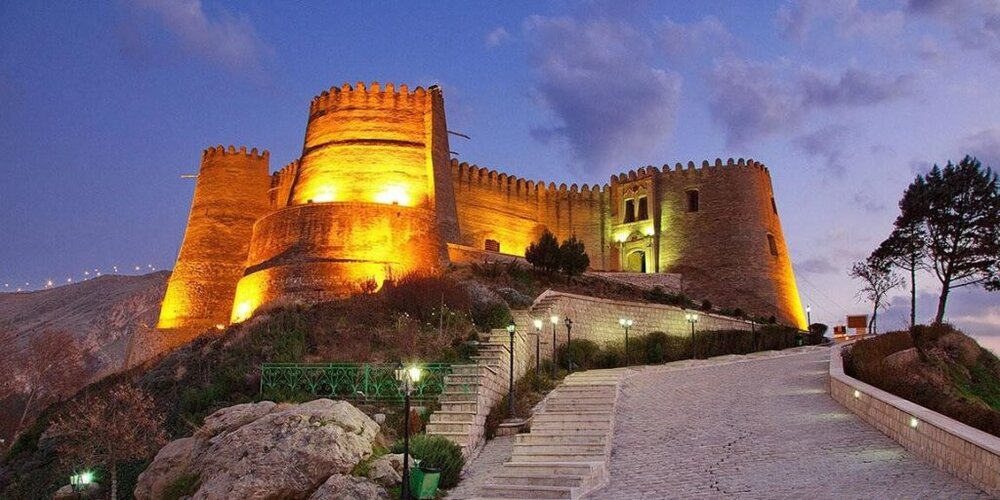Falak-ol-Aflak testament to Iran’s rich history, expert says

TEHRAN – Traces of Iran’s rich history and civilization can be seen at Falak-ol-Aflak fortress, an imposing monument of Sassanids, which dominates the city of Khorramabad in western Lorestan province, the director of the Institute for Humanities and Cultural Studies has said.
As a testament to Iranian history and civilization, Falak-ol-Aflak fortress possesses a large architectural design that can be used as a source by archaeology students, Musa Najafi explained on Friday.
Because of its central location in the country, this magnificent castle has never been attacked by foreigners, and its architectural size and volume point to its history of security, he added.
As this area has been a safe region throughout history, its people could address their secondary needs, which is why architecture, music, and other arts have been prominent in Lorestan and still thriving today, he noted.
The unmissable eight-towered Falak-ol-Aflak Castle dominates the city as one of the most visited travel destinations in the region for both domestic and foreign sightseers.
The fortress dates from the Sassanid era (224–651). It seems particularly imposing and dramatic when floodlit at night, offering picturesque views of its encircling crenelated battlements.
The Sassanid era is of very high importance in Iranian history, under which Persian art, and architecture experienced a general renaissance.
Soaked in history and culture, Lorestan is one of the lesser-known travel destinations in Iran, which mainly acts as a gateway to the sweltering plains below in adjoining Khuzestan province. Lorestan is also a region of raw beauty that an avid nature lover could spend weeks exploring.
The region was inhabited by Iranian Indo-European peoples, including the Medes, c. 1000 BC. Cimmerians and Scythians intermittently ruled the region from about 700 to 625 BC.
Lorestan was incorporated into the growing Achaemenid Empire in about 540 BC and successively was part of the Seleucid, Parthian, and Sassanid dynasties.
ABU/AM
Leave a Comment